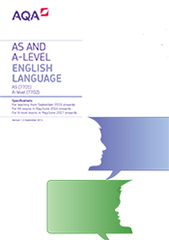4.1 Language, the individual and society
The aim of this part of the subject content is to introduce students to language study, exploring textual variety and children’s language development.
This area of study introduces students to methods of language analysis to explore concepts of audience, purpose, genre, mode and representation. It also introduces students to the study of children’s language development, exploring how children learn language and how they are able to understand and express themselves through language.
Textual variations and representations
Students should study a range of texts:
- about various subjects
- from various writers and speakers
- for various audiences
- for various purposes
- in a variety of genres
- using a variety of modes (written, spoken, electronic)
- from different times
- from different places (global, national, regional).
When analysing texts, students should explore how language is:
- shaped according to audience, purpose, genre and mode
- shaped according to context
- used to construct meanings and representations
- used to enact relationships between writers, speakers and audiences or between participants within a text.
This exploration will include:
- methods of language analysis
- how identity is constructed
- how audiences are addressed and positioned
- the functions of the texts
- the structure and organisation of the texts
- how representations are produced.
Methods of language analysis
Students will be required to identify and describe features of language in the texts using methods of language analysis. In order to study textual variations and representations, students will be required to identify and describe salient features of language in the texts.
The following list is a guide to the areas of language students are expected to examine:
- phonetics, phonology and prosodics: how speech sounds and effects are articulated and analysed
- graphology: the visual aspects of textual design and appearance
- lexis and semantics: the vocabulary of English, including social and historical variation
- grammar, including morphology: the structural patterns and shapes of English at sentence, clause, phrase and word level
- pragmatics: the contextual aspects of language use
- discourse: extended stretches of communication occurring in different genres, modes and contexts.
Children’s language development
Students should explore how children develop their spoken and written skills. To achieve this, students should study:
- the functions of children’s language
- phonological, pragmatic, lexical, semantic and grammatical development
- different genres of speech and writing
- different modes of communication (spoken, written, multimodal)
- theories and research about language development.
